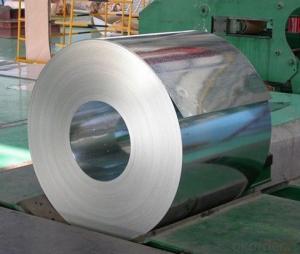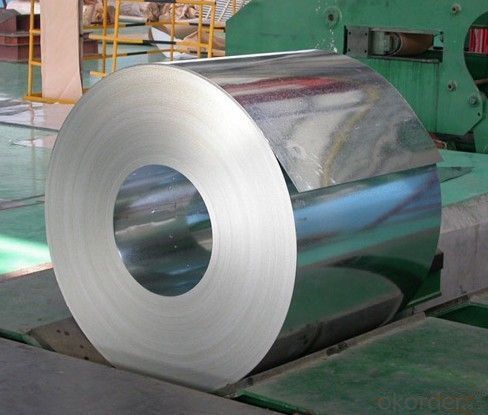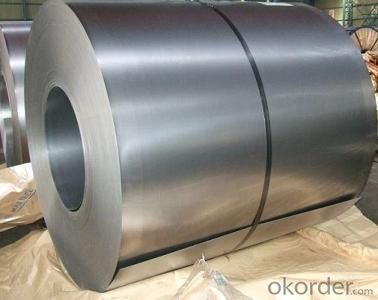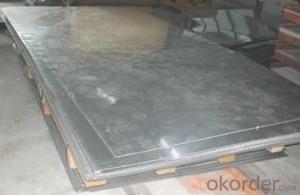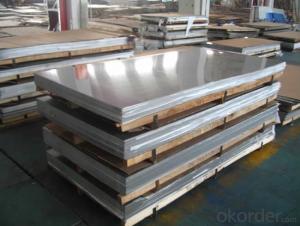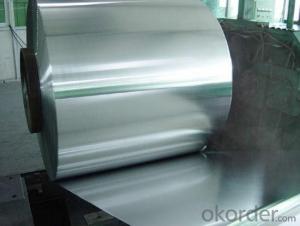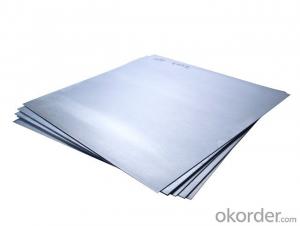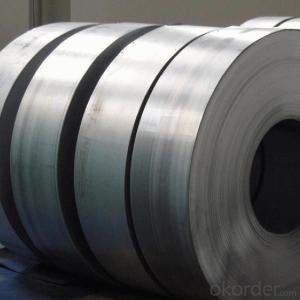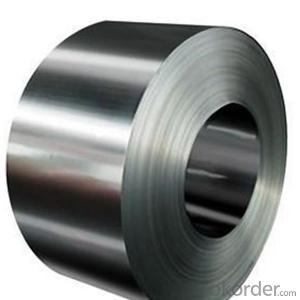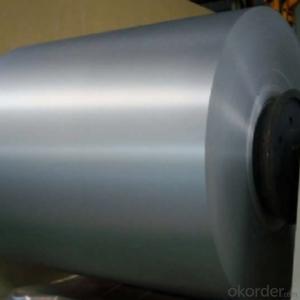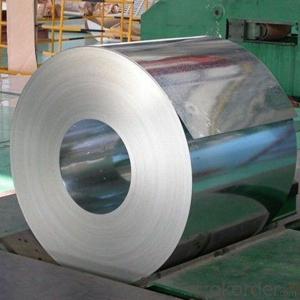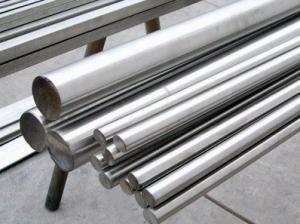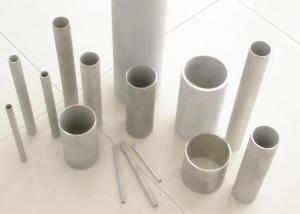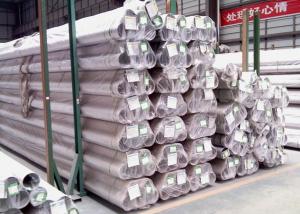Hot Rolled Stainless Steel Coils 304L No.1 Finish Size 5.0*1219C
- Loading Port:
- Tianjin
- Payment Terms:
- TT OR LC
- Min Order Qty:
- 20 m.t.
- Supply Capability:
- 1000000 m.t./month
OKorder Service Pledge
OKorder Financial Service
You Might Also Like
Specification
Product Description
Name:Hot Rolled Stainless Steel coils 304L No.1 finish
Discharge Port: Any Port, China
Cold Rolled Size: thickness0.3-8mm,Width:280-2100mm
Hot Rolled Size: Thickness3-14mm,Width:650-2100mm
Hot Rolled/Cold Rolled Plates : Thickness2-80mm,Width:1500-3000mm
Coil Weight: About 20 Tons
Grade: 201,202,304/304L/304H, 316/316L/316H, 409/L,430 etc.
Technique: Hot Rolled/Cold Rolled
Finish:2B, BA, 2D, No1, No2 etc
Edge: Mill Edge / Slitting Edge
Packaging: In bundles, or as customer's requirement
Place of Origin: Made in China
MOQ: 20 Tons
Payment Terms: 100% LC at sight, or 100%TT in advance
Delivery Time: With 30-40 days after deposit
2.Feature
high temperature resistance,Excellent processing performance,high toughness,widely used in medical industry and furniture decoration industry and food industry.
3.Pictures of product
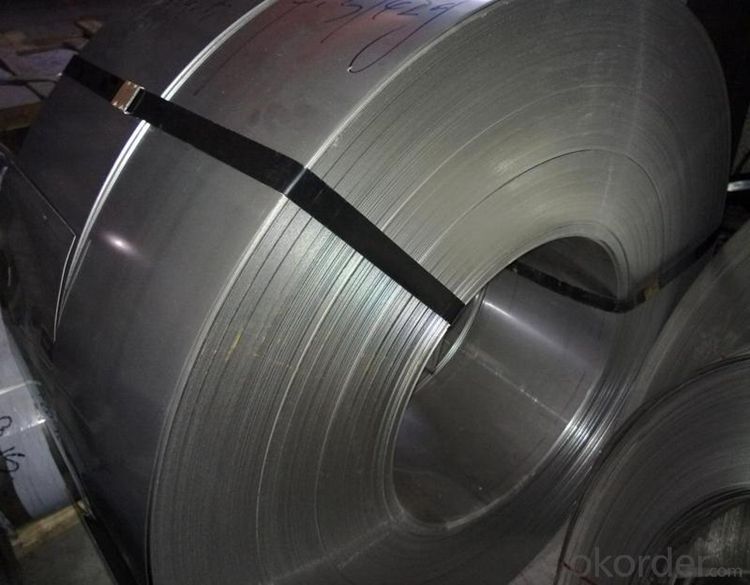
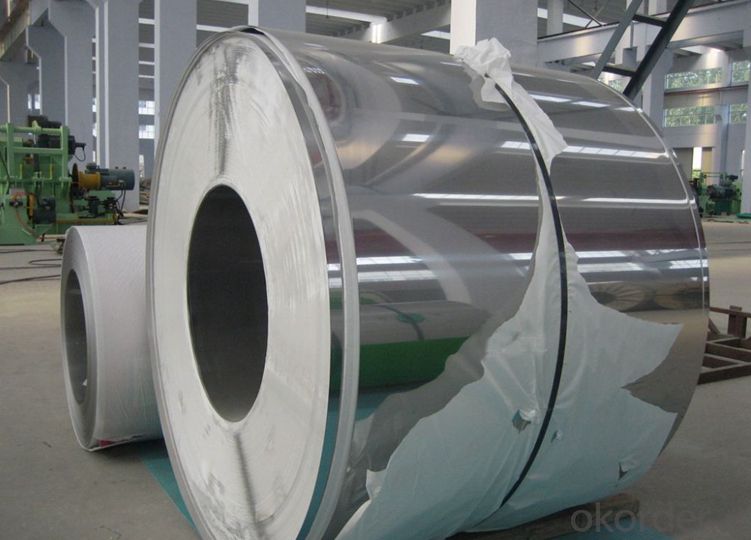
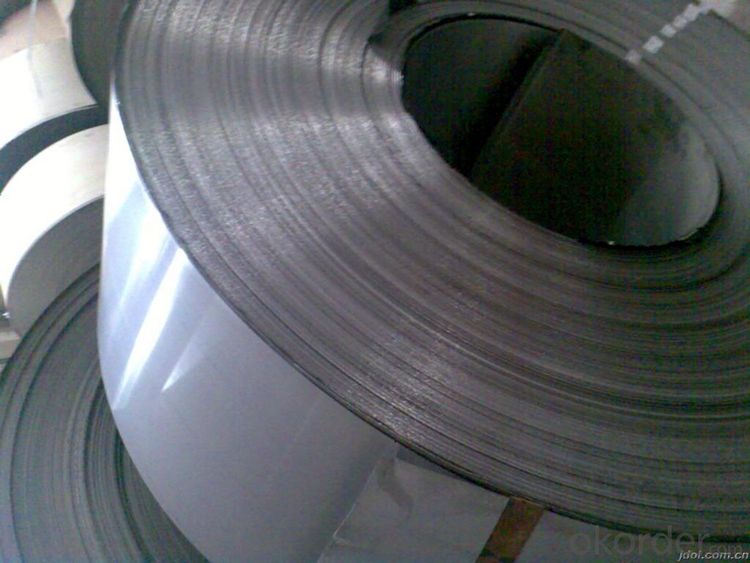
4. Physical Data
strength of extensionσb (MPa)≥520304
condition yield strength σ0.2 (MPa)≥205
elongation δ5 (%)≥40
percentage reduction of area ψ (%)≥60
hardness:≤187HB;≤90HRB;≤200HV
density (20℃,g/cm3):7.93
melting point (℃):1398~1454
specific heat capacity (0~100℃,KJ·kgK):0.50
heat conductivity (W·m·K):(100℃)16.3,(500℃)21.5
coefficient of linear expansion (10·K):(0~100℃)17.2,(0~500℃)18.4
specific resistance(20℃,10Ω·m):0.73
longitudinal modulus of elasticity(20℃,KN/mm):193
5.Packaging & Delivery
Packaging Detail Standard export packing or following customer's demand
Delivery Time: Within 15-20 days after deposit or according to the order quantity
6.FAQ
Q:What is payment terms?
A:100%LC in advance or 100% T/T in advance
Q:What is the delivery time?
A:10-15 days after deposit.
- Q: What are the pricing options for stainless steel sheets?
- The pricing options for stainless steel sheets can vary depending on several factors. The first factor is the grade of stainless steel being used. Stainless steel is available in different grades, with each grade offering different levels of corrosion resistance and durability. Higher-grade stainless steel sheets typically come at a higher price point. Another factor that affects the pricing is the thickness and size of the sheets. Thicker and larger stainless steel sheets tend to be more expensive due to the increased amount of raw material required and the additional processing involved. Furthermore, the finish of the stainless steel sheets can also impact the pricing. Stainless steel sheets can have different finishes such as brushed, mirror, or matte. Finishes that require more extensive processing and polishing may come at a higher cost. Additionally, market conditions, including the supply and demand for stainless steel, can influence the pricing. Prices can fluctuate based on factors like raw material costs, production capacity, and global economic conditions. It is also important to consider the supplier or manufacturer from whom you are purchasing the stainless steel sheets. Different suppliers may offer different pricing options based on their overhead costs, production capabilities, and market positioning. In summary, the pricing options for stainless steel sheets depend on factors such as the grade, thickness, size, finish, market conditions, and the supplier. It is advisable to research and compare prices from different sources to find the most suitable option for your specific requirements.
- Q: Can stainless steel sheets be used for backsplashes?
- Yes, stainless steel sheets can be used for backsplashes. Stainless steel is a popular choice for backsplashes due to its durability, resistance to heat and moisture, and easy maintenance. It can handle the heat and moisture that is often present in kitchen areas, making it a suitable material for protecting walls behind stovetops and sinks. Additionally, stainless steel backsplashes can add a modern and sleek look to the kitchen, complementing various design styles. They are also easy to clean, as they can be wiped down with a damp cloth or cleaned with mild soap and water. Overall, stainless steel sheets are a practical and aesthetic choice for backsplashes in both residential and commercial settings.
- Q: Can stainless steel sheets be used in the construction industry?
- Yes, stainless steel sheets can be used in the construction industry. They are commonly used for a variety of applications including roofing, cladding, structural supports, and interior finishes. Stainless steel offers excellent corrosion resistance, durability, and aesthetic appeal, making it a popular choice for construction projects.
- Q: Are stainless steel sheets suitable for marine applications?
- Yes, stainless steel sheets are highly suitable for marine applications. Stainless steel is known for its excellent corrosion resistance, which makes it ideal for use in marine environments where exposure to saltwater and other harsh elements is common. Stainless steel sheets have a protective oxide layer that prevents rust and corrosion, ensuring their longevity and durability in marine applications. Additionally, stainless steel sheets have high strength and impact resistance, making them capable of withstanding the harsh conditions and stresses encountered in marine environments. Overall, stainless steel sheets are a popular choice for marine applications due to their corrosion resistance, durability, and strength.
- Q: 904L stainless steel plate generally used in what industry is more?
- With high chromium content and adequate content of nickel, copper to make it strong acid resistant ability, especially for chloride crevice corrosion and stress corrosion cracking are highly resistant, not prone to pitting and cracking, pitting resistance slightly better with other steel, with good machinability and welding that can be used for pressure vessel.
- Q: What are the different types of edges available for stainless steel sheets?
- There are several different types of edges available for stainless steel sheets, each with its own specific purpose and aesthetic appeal. Here are some of the common edge types: 1. Mill Edge: This is the standard edge finish produced by the mill, which is often considered the most cost-effective option. It has a relatively smooth, unfinished appearance. 2. Slit Edge: This edge is achieved by cutting the stainless steel sheet along its length, resulting in a straight edge with slight burrs. It is commonly used for thinner gauges of stainless steel. 3. Deburred Edge: This edge is created by removing any burrs or sharp edges from the slit edge, resulting in a smoother finish that is safer to handle. It is commonly used in applications where safety is a concern, such as food processing or medical equipment. 4. Rounded Edge: This edge is achieved by rounding off the sharp corners of the stainless steel sheet. It provides a more aesthetically pleasing look and also improves safety by eliminating sharp edges. 5. Beveled Edge: This edge is created by cutting a diagonal bevel along the edge of the stainless steel sheet. It is often used for decorative purposes and can add a touch of elegance to the finished product. 6. Rolled Edge: This edge is formed by rolling the stainless steel sheet under high pressure, resulting in a smooth, curved edge. It is commonly used in applications where a seamless look is desired, such as architectural projects or automotive components. Overall, the choice of edge type for stainless steel sheets depends on the specific requirements of the application, including functionality, safety, and aesthetics. It is important to consider these factors in order to select the most suitable edge type for the desired end use.
- Q: Can stainless steel sheets be used for solar panels?
- Solar panels can indeed utilize stainless steel sheets. This material possesses a strong and reliable nature that withstands corrosion, thus making it suitable for long-term and outdoor usage. It offers exceptional defense against environmental elements like moisture and UV radiation, which are commonly encountered in solar panel installations. Furthermore, stainless steel showcases commendable thermal conductivity, promoting efficient dissipation of heat from the solar cells. This characteristic aids in maximizing the energy conversion efficiency of the panels. Additionally, stainless steel sheets present a sleek and polished surface, enhancing the visual appeal of the solar panels. All in all, stainless steel sheets are a reasonable and widely chosen option for the production of solar panels due to their durability, resistance to corrosion, thermal conductivity, and aesthetic attractiveness.
- Q: How do you prevent discoloration or staining on stainless steel sheets?
- To prevent discoloration or staining on stainless steel sheets, there are several steps one can take. First, it is important to clean the sheets regularly using mild soap or detergent and warm water. Avoid abrasive cleaners or scrub brushes that could scratch the surface. After cleaning, rinse thoroughly with clean water and dry with a soft cloth to prevent water spots. In addition, it is crucial to avoid using harsh chemicals like bleach, ammonia, or chlorine-based cleaners on stainless steel sheets. These chemicals can cause discoloration or staining. Instead, opt for stainless steel-specific cleaners or natural alternatives such as vinegar or lemon juice. Proper storage is also essential. Stainless steel sheets should be kept in a clean and dry environment to prevent exposure to moisture or humidity. Moisture can lead to corrosion or rust, resulting in discoloration. If the sheets are stored outdoors, make sure to adequately cover them to protect against rain or snow. Applying a protective coating or sealant on stainless steel sheets can help prevent discoloration or staining. There are various products available specifically designed for stainless steel protection. It is important to follow the manufacturer's instructions for application and reapplication if necessary. Furthermore, it is important to avoid contact between stainless steel sheets and other reactive metals such as iron, copper, or aluminum. When these metals come into contact with stainless steel, a chemical reaction called galvanic corrosion can occur, leading to discoloration and staining. To prevent this, ensure separation or isolation between stainless steel and reactive metals. Regular maintenance is crucial in preserving the appearance and integrity of stainless steel sheets. Regularly inspect the sheets for any signs of discoloration, staining, or damage. Address any issues promptly to prevent further deterioration. If stubborn stains are present, use a non-abrasive stainless steel cleaner and a soft cloth to gently rub the affected area in the direction of the grain. By following these preventive measures, the appearance and integrity of stainless steel sheets can be maintained, ensuring they remain free from discoloration or staining for an extended period of time.
- Q: What is stainless steel AB board, please?
- The BA board is not used for drawing purposes, if it is drawing, put fine timber to petty use is wasted.
- Q: Are stainless steel sheets suitable for petrochemical refineries?
- Yes, stainless steel sheets are suitable for petrochemical refineries. Stainless steel has excellent corrosion resistance, high strength, and can withstand high temperatures, making it ideal for the harsh and corrosive environments present in petrochemical refineries.
Send your message to us
Hot Rolled Stainless Steel Coils 304L No.1 Finish Size 5.0*1219C
- Loading Port:
- Tianjin
- Payment Terms:
- TT OR LC
- Min Order Qty:
- 20 m.t.
- Supply Capability:
- 1000000 m.t./month
OKorder Service Pledge
OKorder Financial Service
Similar products
Hot products
Hot Searches
Related keywords
